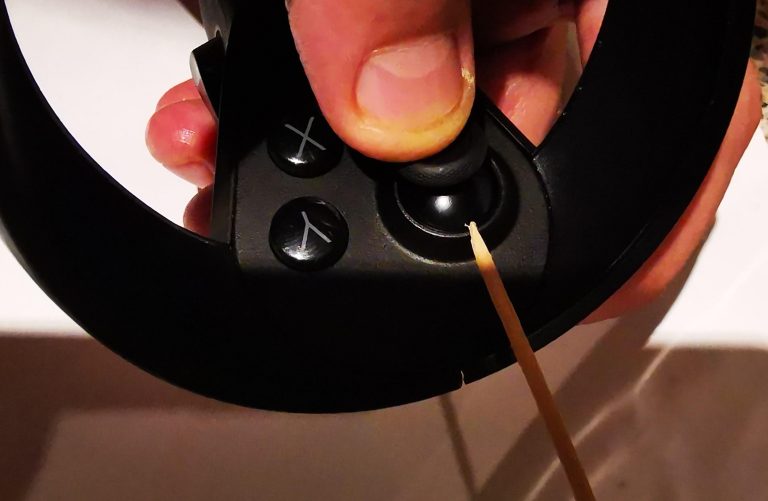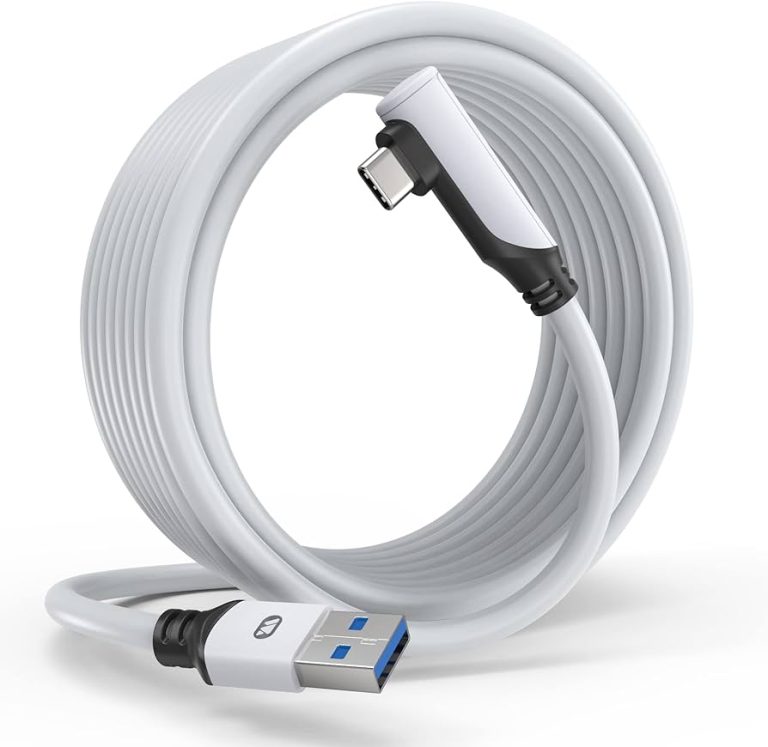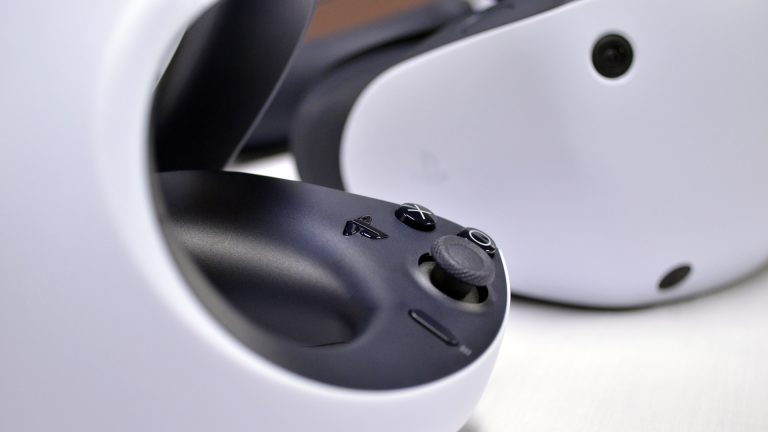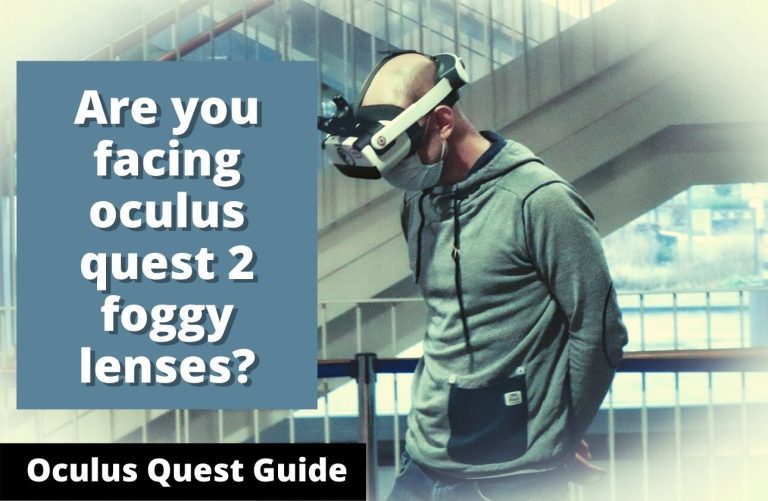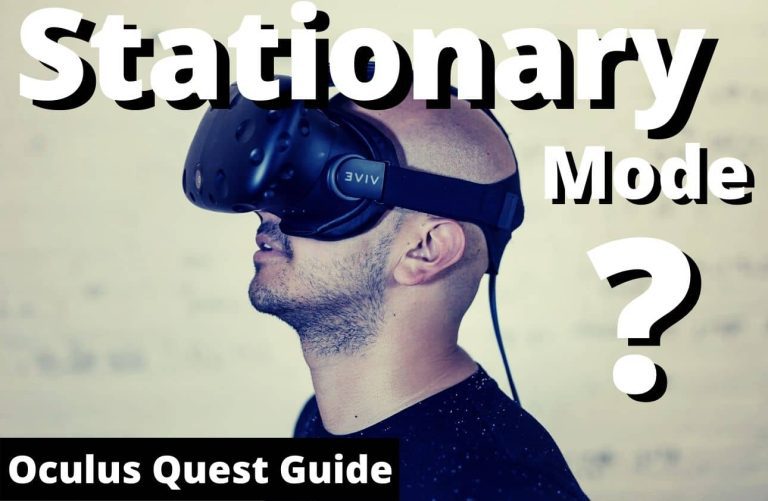Oculus Quest USB 3 Connection Required? : Unveil the Truth!
An Oculus Quest requires a USB 3.0 connection for Oculus Link. This connection ensures stable data transfer and optimal performance.
The Oculus Quest, a widely popular virtual reality headset, offers a blend of convenience and immersive experience. To unlock its full potential with a PC, a high-quality USB 3. 0 connection is crucial. This requirement is part of the Oculus Link setup, which extends the Quest’s capabilities by granting access to a vast library of PC VR titles.
Users must ensure their USB cable not only meets the 3. 0 standard but also has the bandwidth to handle the data-intensive VR content. Choosing the right USB cable and port is essential for maintaining the integrity of the VR experience, with uninterrupted gameplay and high-quality graphics. The USB 3. 0’s speed and stability help to deliver the engaging and smooth performance that VR enthusiasts seek.
Oculus Quest Usb 3 Connection Required? : Unveil The Truth!
Oculus Quest’s connectivity hinges significantly on its ability to interface with other devices, especially for charging and data transfer. USB 3.0, known for its high-speed data transfer rates, is often considered essential for a fully immersive VR experience. The higher bandwidth of USB 3.0 allows for faster data synchronization and the potential for improved performance during PC-powered VR gaming.
There are, nevertheless, misconceptions surrounding the USB requirements of the Oculus Quest. While it’s true that USB 3.0 can enhance certain aspects of the VR experience, the headset is designed with a versatile approach to connectivity, and can also function with a USB 2.0 connection. This adaptability ensures that users without access to USB 3.0 can still enjoy a breadth of VR experiences, albeit with potential limitations in data transfer speeds.
Quest For Clarity: Usb 3.0’s Role
USB 3.0 is a significant upgrade from its predecessor, offering enhanced power delivery and greater bandwidth, crucial for demanding tasks such as high-definition virtual reality experiences. This technology provides a theoretical transfer rate of up to 5 Gbps, markedly improving data synchronization and charging efficiency for sophisticated devices like the Oculus Quest.
The Oculus Quest, when paired with USB 3.0, unlocks its full potential. USB 3.0’s impressive performance means minimal latency and optimal refresh rates, key for an immersive VR experience. Faster data transfer enables smoother gameplay, quicker updates, and a more responsive interface compared to older USB standards.
| Feature | USB 3.0 | USB 2.0 |
|---|---|---|
| Max Data Transfer Rate | 5 Gbps | 480 Mbps |
| Latency | Lower | Higher |
| Power Delivery | Enhanced for device efficiency | Standard |
| Refresh Rate | Optimized for VR | May affect performance |
Technical Deep Dive: Oculus Quest’s Inner Workings
Oculus Quest requires a USB 3.0 connection to transfer data quickly and efficiently, enhancing the virtual reality experience. This high-speed connectivity is crucial for both gaming and non-gaming functions, allowing for rapid movement tracking and decreased latency. With USB 3.0, expect improved performance and seamless integration with the VR environment.
The Oculus Quest’s architecture is designed with a focus on user-friendly operation and versatility. The developers meticulously crafted a system that optimizes the power of USB 3.0 connectivity to ensure quick data transfer and minimal lag, which is especially critical for maintaining the immersion and fluidity in VR experiences. This highlights the Oculus Quest’s commitment to delivering a high-quality user experience across various applications.
Real-world Usage: User Experiences With Usb 3.0
Experiences with the Oculus Quest’s USB 3.0 connection tell a varied tale. Gamers who demand unwavering performance often swear by the stability and speed offered by USB 3.0. Real-world feedback underscores the importance of a robust connection, which USB 3.0 consistently delivers, to prevent disruptions during immersive gameplay.
New users of Oculus Quest also notice a remarkable difference when comparing USB 3.0 to previous standards. The fast data transfer rates ensure a smooth and enjoyable experience, particularly in high-definition VR environments. Survey results reaffirm this sentiment, with a majority indicating a preference for USB 3.0 due to its superior performance.
Read More – Oculus Quest 2 Mac M1? Ultimate Gaming Setup Unveiled!
Exploration of alternative connection methods has yielded mixed outcomes. Some find that while older USB standards can function, they do not provide the same level of satisfaction or reliability as a USB 3.0 connection. These findings highlight the necessity for not just any connection but one that meets the high demands of modern VR technology.
Troubleshooting Tips For Oculus Quest Connections
Ensuring the Oculus Quest operates at its full capacity requires a stable USB 3.0 connection.
To maintain optimal performance, begin with a high-quality USB 3.0 cable that is both
functional and compatible with the headset. Users frequently encounter issues where the Quest fails to
recognize the USB 3.0 port. This can often be alleviated by checking the cable for any physical damage and ensuring it is
securely plugged into both the headset and the computer.
To address common connectivity problems, start by restarting the Oculus Quest and the computer. Additionally,
updating the Oculus app to the latest version can resolve unrecognized USB 3.0 connection issues. For users
experiencing persistent trouble, it’s recommended to test the cable with different USB ports
or even on another computer to isolate the problem. Forcefully closing and reopening the Oculus app can sometimes
re-establish a lost connection.
For maintaining long-term connection quality, routinely check for updates for both the app and Quest firmware.
Keep the USB ports clean, avoiding dust and debris accumulation. Regularly inspect the USB cable for wear and tear, and
consider investing in a cable specifically designed for the Oculus Quest. This can significantly enhance the connection stability,
providing a better overall virtual reality experience.

Credit: uk.soundcore.com
Compatibility Considerations For Oculus Link
Oculus Link technology facilitates a high-fidelity and immersive VR gaming experience by connecting a standalone Oculus Quest headset to a gaming PC. A key component for this setup is a high-quality USB 3.0 cable to handle data transfer and power requirements efficiently. The necessity for USB 3.0 is due to its bandwidth capabilities, which are crucial for maintaining the integrity of real-time game rendering and headset sensor data communication.
| Product Name | Type | Length | Price Range |
|---|---|---|---|
| Oculus Quest High-Speed Cable | USB 3.0 | 5 meters | $75-$100 |
| Anker Powerline | USB 3.0 | 3 meters | $15-$30 |
| PartyLink USB-C Cable | USB 3.0 | 5 meters | $20-$40 |
For those seeking the optimal Oculus Link experience, it is paramount to match the headset with compliant cables and adapters, ensuring compatibility and performance. Users must reconcile their expectations with the technical specifications of their equipment, acknowledging that USB 3.0 is not just recommended, but essential for Oculus Link to function as intended.
Enhancements Through Usb 3.0
Oculus Quest users can reap substantial benefits by leveraging a USB 3.0 connection. This higher bandwidth interface significantly enhances the VR experience, enabling faster data transfer, improved charge times, and streaming higher-quality visuals for an immersive virtual reality journey. By using USB 3.0, the Oculus Quest is not only optimized for current demands but also positioned to handle future VR content and updates that may require more intensive data throughput.
With the evolution of VR technology, ensuring that your device is prepared to handle new developments is crucial. The Oculus Quest’s compatibility with USB 3.0 offers users confidence that their device is ready for tomorrow’s advancements in VR entertainment and applications. This forward-thinking approach guarantees that the Oculus Quest platform remains relevant and high-performing, as cutting-edge VR experiences continue to push the boundaries of what’s possible.
Frequently Asked Questions Of Oculus Quest Usb 3 Connection Required?
Is Oculus Quest Usb 3.0 Connection Necessary?
For Oculus Quest, a USB 3. 0 connection is recommended for optimal performance, particularly when using Oculus Link to connect to a gaming PC for VR experiences. It ensures fast data transfer and a smooth virtual reality experience. USB 2.
0 may work but with limitations.
What Benefits Does Usb 3.0 Offer For Oculus Quest?
USB 3. 0 provides faster data transfer rates up to 5Gbps, which is beneficial for Oculus Quest when using the Oculus Link feature. This results in improved graphics quality and a more seamless VR experience, with less latency and better overall performance.
Can Oculus Quest Use Usb 2.0 For Pc Connection?
Yes, Oculus Quest can use USB 2. 0, but it will deliver a lower-quality VR experience than USB 3. 0 due to its slower data transfer rate. While it’s compatible, users may encounter reduced performance and possible connectivity issues.
How To Ensure Oculus Quest Is Connected Via Usb 3.0?
To ensure Oculus Quest is connected via USB 3. 0, use a USB 3. 0 port on your PC, typically marked with a blue insert. Additionally, use a high-quality USB 3. 0 cable certified for Oculus Link to maintain a stable connection.
Conclusion
Unlock the full potential of your Oculus Quest with the right USB 3 connection. Ensuring a high-speed link paves the way for a seamless VR experience. Embrace this upgrade and dive into virtual realms with unparalleled clarity. Ready to level up your gaming?
Connect, and let the adventure begin!

